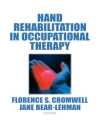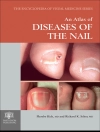Ethical considerations regarding applications of technologies are becoming increasingly more important. This as well as varying religious viewpoints concerning this topic are discussed. A general overview on the current state of medical technologies is followed by an example of a typical image processing problem. The next section focuses on robotics applications, i.e. using mechatronic assisting systems in neurosurgical operating rooms. A comprehensive overview on progress in intraoperative magnetic resonance imaging using four different setups with different magnetic designs and field strengths ranging from 0.3 to 3 T exemplifies recent developments in neurosurgery. This Acta Neurochirurgica supplement distills the Joint Convention of the Academia Eurasiana Neurochirurgica and the German Academy of Neurosurgery held in Bamberg, Germany from Sept. 1-3, 2005. The main focus was ‘Medical Technologies for Neurosurgery’ and included imaging, image processing, robotics, workflow analysis, and ethics.
表中的内容
Bioethics, technology and human dignity: the Roman Catholic viewpoint.- Robotics and artificial intelligence: Jewish ethical perspectives.- Ethics in the use of new medical technologies for neurosurgery: “Islamic viewpoint”.- Shadow of Buddhism and Shintoism in neurosurgical practice in Japan.- Current status of medical technology.- Uncertainty in diffusion tensor based fibre tracking.- Robotics in neurosurgery: which tools for what?.- Computer- and robot-aided head surgery.- Telecontrolled micromanipulator system (Neu Robot) for minimally invasive neurosurgery.- Usefulness of intraoperative magnetic resonance imaging for glioma surgery.- Intraoperative magnetic resonance imaging in neurosurgery: the Brigham concept.- Intraoperative high-field MRI: anatomical and functional imaging.- Intraoperative MR imaging: preliminary results with 3 tesla MR system.












